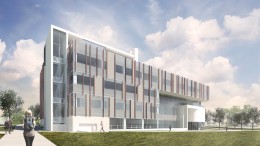 Wright State University has won a $4.6 million National Institutes of Health grant aimed at improving the movement of badly injured limbs—funding that will accelerate the growth and productivity of the rapidly developing neuroscience research on campus and support the research and graduate training programs that will be housed in the new $37 million Neuroscience and Engineering Collaboration Building.
Wright State University has won a $4.6 million National Institutes of Health grant aimed at improving the movement of badly injured limbs—funding that will accelerate the growth and productivity of the rapidly developing neuroscience research on campus and support the research and graduate training programs that will be housed in the new $37 million Neuroscience and Engineering Collaboration Building.
The grant was one of only two of its type awarded this year by the National Institute of Neurological Disorders and Stroke, which is part of NIH.
“This grant will result in important medical advancements and is a tribute to the quality of scientific research being done here at Wright State University,” said President David R. Hopkins.
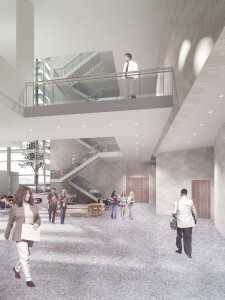 Timothy Cope, Ph.D., Brage Golding Distinguished Professor of Research and director of the Wright State University & Premier Health Partners Neuroscience Institute, said there is a growing national awareness of the success in neuroscience at Wright State.
Timothy Cope, Ph.D., Brage Golding Distinguished Professor of Research and director of the Wright State University & Premier Health Partners Neuroscience Institute, said there is a growing national awareness of the success in neuroscience at Wright State.
“One of the benefits is that we’re attracting first-rate students and training very highly skilled technicians, such as experts in microscopy, who have become vital assets to the community,” Cope said. “We not only have the knowledge and core facilities necessary to do top-flight research, we also have the scientists, graduate students and technicians necessary to conduct research that will improve people’s lives.”
The five-year grant is for research titled “Synaptic Function: Effects of Nerve Injury, Repair and Altered Activity.” Wright State investigators involved in the project include Cope; Robert Fyffe, Ph.D., vice president for research; and Mark Rich, M.D., Ph.D., professor of neuroscience at the Boonshoft School of Medicine. Also collaborating is Francisco Alvarez, Ph.D., of Emory University.
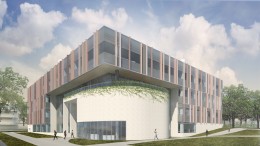 This award builds on the research performed in the first $4.8 million Program Project Grant awarded to the team in 2007. In that research, investigators identified several key, long-term adaptations that occur after nerve injury even if nerve regeneration itself is successful. These adaptations point the way to new therapeutic strategies that will improve recovery from movement and other disorders that remain long after nerve injury.
This award builds on the research performed in the first $4.8 million Program Project Grant awarded to the team in 2007. In that research, investigators identified several key, long-term adaptations that occur after nerve injury even if nerve regeneration itself is successful. These adaptations point the way to new therapeutic strategies that will improve recovery from movement and other disorders that remain long after nerve injury.
Cope said that after traumatic damage, the branches of nerves that carry signals about sensation and movement through the arms and legs can regenerate or regrow.
“Our Wright State team has made the unfortunate and surprising discovery that these nerves lose or modify their connections in the spinal cord in ways that can make movement clumsy and fatiguing,” Cope said. “This new grant will explore how the central nervous system responds to injury of peripheral nerves. This research can lead directly to new therapies to help soldiers and others recover near normal function after injuries to a limb.”
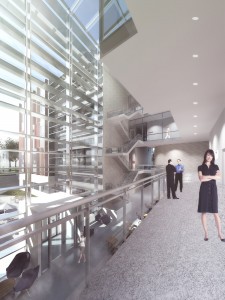 A recent study estimates that nearly 1 million Americans suffer traumatic injury to peripheral nerves each year, said Cope.
A recent study estimates that nearly 1 million Americans suffer traumatic injury to peripheral nerves each year, said Cope.
Current treatment involves surgically repairing severed nerves in the limb so that their impulses, or signals, can be sent to the brain and spinal cord, which constitute the central nervous system. However, only about 10 percent of adults who undergo such surgery regain near-normal function, Cope said.
Scientists have recently learned that even if the nerves in the limb are repaired and begin sending signals, the limb sometimes doesn’t regain full function because the pathways in the brain and spinal cord that previously existed have been lost, Cope said.
“We postulate that a significant part of that failure of recovery is because the central nervous system does not reorganize itself as needed to benefit from the regeneration that takes place,” Cope said. “This is the heart of the research.”
Cope said the Program Project Grant team, which includes about 20 researchers and students, is looking at the way communication is changed between the nerve cells in the limbs and the brain and spinal cord. They are using electrophysiology, genetic manipulations and microscopy to gauge the molecular signals.
Cope also said the grant will help nourish the work that will be done in the new Neuroscience and Engineering Collaboration Building, scheduled for completion in 2015 and located on campus between the Russ Engineering Center and Boonshoft School of Medicine’s White Hall.


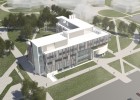

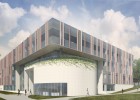
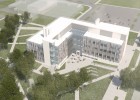
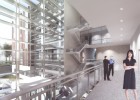

 Wright State alum Lindsay Aitchison fulfills childhood space-agency dream
Wright State alum Lindsay Aitchison fulfills childhood space-agency dream  Wright State business professor, alumnus honored by regional technology organizations
Wright State business professor, alumnus honored by regional technology organizations  Wright State University Foundation awards 11 Students First Fund projects
Wright State University Foundation awards 11 Students First Fund projects  Gov. DeWine reappoints Board Treasurer Beth Ferris and names student Ella Vaught to Wright State Board of Trustees
Gov. DeWine reappoints Board Treasurer Beth Ferris and names student Ella Vaught to Wright State Board of Trustees  Joe Gruenberg’s 40-Year support for Wright State celebrated with Honorary Alumnus Award
Joe Gruenberg’s 40-Year support for Wright State celebrated with Honorary Alumnus Award 